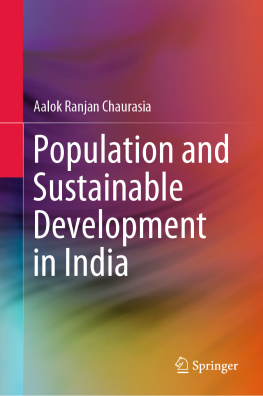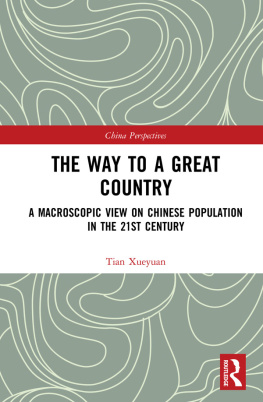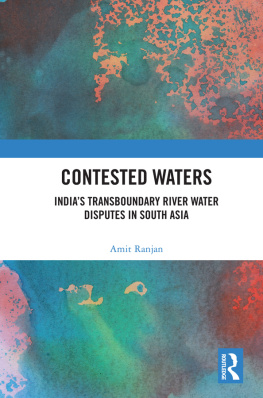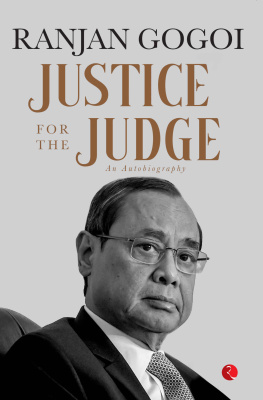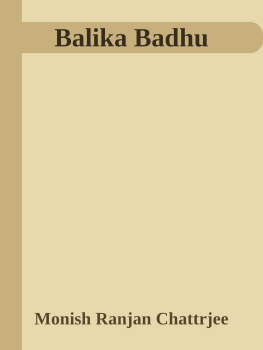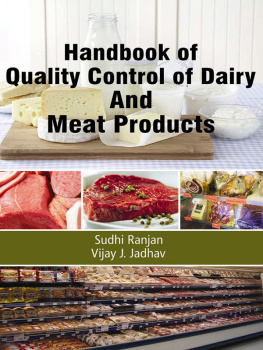Aalok Ranjan Chaurasia - Population and Sustainable Development in India
Here you can read online Aalok Ranjan Chaurasia - Population and Sustainable Development in India full text of the book (entire story) in english for free. Download pdf and epub, get meaning, cover and reviews about this ebook. year: 2020, publisher: Springer Singapore, genre: Politics. Description of the work, (preface) as well as reviews are available. Best literature library LitArk.com created for fans of good reading and offers a wide selection of genres:
Romance novel
Science fiction
Adventure
Detective
Science
History
Home and family
Prose
Art
Politics
Computer
Non-fiction
Religion
Business
Children
Humor
Choose a favorite category and find really read worthwhile books. Enjoy immersion in the world of imagination, feel the emotions of the characters or learn something new for yourself, make an fascinating discovery.
- Book:Population and Sustainable Development in India
- Author:
- Publisher:Springer Singapore
- Genre:
- Year:2020
- Rating:3 / 5
- Favourites:Add to favourites
- Your mark:
- 60
- 1
- 2
- 3
- 4
- 5
Population and Sustainable Development in India: summary, description and annotation
We offer to read an annotation, description, summary or preface (depends on what the author of the book "Population and Sustainable Development in India" wrote himself). If you haven't found the necessary information about the book — write in the comments, we will try to find it.
Population and Sustainable Development in India — read online for free the complete book (whole text) full work
Below is the text of the book, divided by pages. System saving the place of the last page read, allows you to conveniently read the book "Population and Sustainable Development in India" online for free, without having to search again every time where you left off. Put a bookmark, and you can go to the page where you finished reading at any time.
Font size:
Interval:
Bookmark:
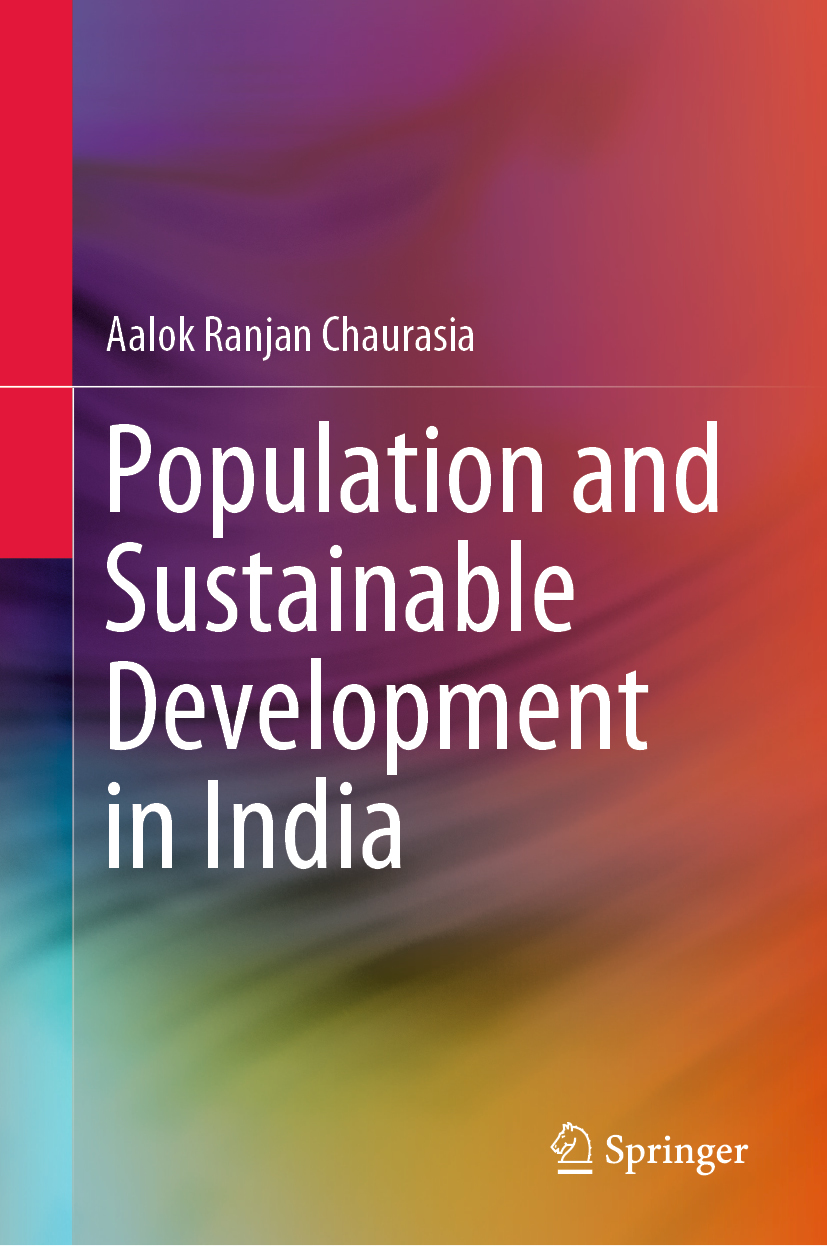

This Springer imprint is published by the registered company Springer Nature Singapore Pte Ltd.
The registered company address is: 152 Beach Road, #21-01/04 Gateway East, Singapore 189721, Singapore
is M.Sc. from Kanpur University, Kanpur, India, Ph.D. from Jiwaji University, Gwalior, India, and holds Postgraduate Diploma in Population and Development from Jawaharlal Nehru University, New Delhi, India. He has participated in the United Nations Global Training Programme in Population and Development, 19901991 and has published more than 30 books and 120 research papers. A member of the International Union for the Scientific Study of Population and a life member of the Indian Association for the Study of Population, he also serves on the editorial board of the journal Demography India. His academic engagements include Director, State Population Resource Centre, Madhya Pradesh, India; Professor, Population Research Centre, Institute of Economic Growth, Delhi, India; and Project Director, Mother and Child Tracking System, Ministry of Health and Family Welfare, Government of India. He has also served as an expert member of the National Population Commission, Government of India.
The United Nations 2030 Sustainable Development Agenda is a plan of action for people, planet and prosperity with the central objective of promoting well-being of the current and the future generations. This chapter discusses the link between population and sustainable development with specific reference to India, the second most populous country of the world. The chapter also presents synopses of the chapters included in the monograph that focus on different dimensions of population, economy and environment in the Indian context.
The United Nations General Assembly adopted, in 2015, the post-2015 development agenda Transforming Our World: The 2030 Agenda for Sustainable Development as the plan of action for people, planet and prosperity (United Nations ). The central objective of the agenda is to promote well-being of the current and the future generations. The agenda is summarised in 17 sustainable development goals (SDGs) and 169 targets to be achieved by the year 2030. The United Nations expects that the agenda will stimulate action at local, national and international levels in areas that are of critical importance for the humanity and the planet.
The term sustainable development has been defined in different ways in different contexts. The most popular conceptual foundation of sustainable development that is accepted universally is the concept of inter-generational equity. Following this concept, the United Nations World Commission on Environment and Development has defined sustainable development as the development that meets the needs of the present generation without compromising the ability of future generations to meet their own needs (United Nations ). The concept of inter-generational equity is closely associated with the concept of security of the present and future generations. Security has three dimensionseconomic and social, environmental, and physical and personal. The economic and social security is related to meeting the needs of the present and future generations and is closely linked with the environmental security as the environment provides the natural resources necessary for sustaining life on the planet Earth and, at the same time, absorbs the wastes generated through use of natural resources and recycle them in the usable form. Finally, the physical and personal security is related to striking the balance between the economic and social security and the environmental security to ensure that efforts directed towards economic and social security are transformed into sustainable long-term practices. Physical and personal security is essentially a matter of governancethe manner in which the power is exercised in the management of natural resources to meet the needs of the people.
From the operational perspective, the concept of inter-generational equity or the issues related to economic, social, environmental, physical and personal security have been translated into the framework of socially inclusive and environmentally sustainable economic growth (Sachs ). This operational perspective may be viewed as the organising principle for meeting human development goals or the needs of the people while, at the same time, sustaining the ability of the environment to provide natural resources necessary for economic and social security through a socially inclusive process of change. The United Nations 2030 Sustainable Development Agenda follows this operational perspective to stimulate action in areas of critical importance for the humanity and the planet.
The challenge of achieving SDGs as articulated in the 2030 Sustainable Development Agenda is, however, a daunting one simply because the issues and concerns related to socially inclusive and environmentally sustainable economic growth are closely related to population transition or the change in the population stockthe size and the age composition. It is obvious that the task of reducing poverty and promoting human well-being and, at the same time, ensuring sustainability of the environment is inseparable from the change in the population stock. It is argued that efforts to promote sustainable development without addressing the population dynamics, therefore, are bound to fail (UNFPA ). This means that around 1.168 million people will be added to the world population during the 15 years between 2015 and 2030, while the net addition to the world population during 20152100 will be around 3.8 billion. This massive increase in the world population in the coming years will have serious implications for sustainable development processes.
Font size:
Interval:
Bookmark:
Similar books «Population and Sustainable Development in India»
Look at similar books to Population and Sustainable Development in India. We have selected literature similar in name and meaning in the hope of providing readers with more options to find new, interesting, not yet read works.
Discussion, reviews of the book Population and Sustainable Development in India and just readers' own opinions. Leave your comments, write what you think about the work, its meaning or the main characters. Specify what exactly you liked and what you didn't like, and why you think so.

